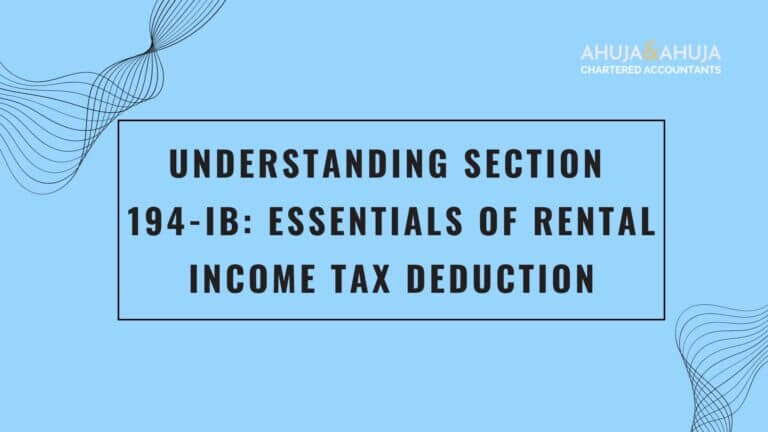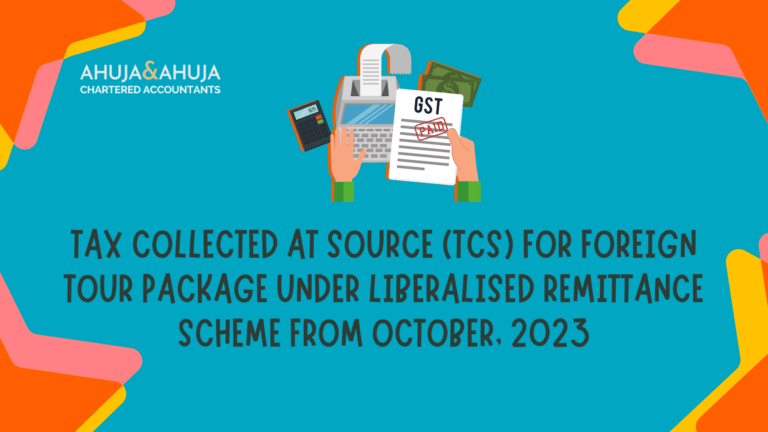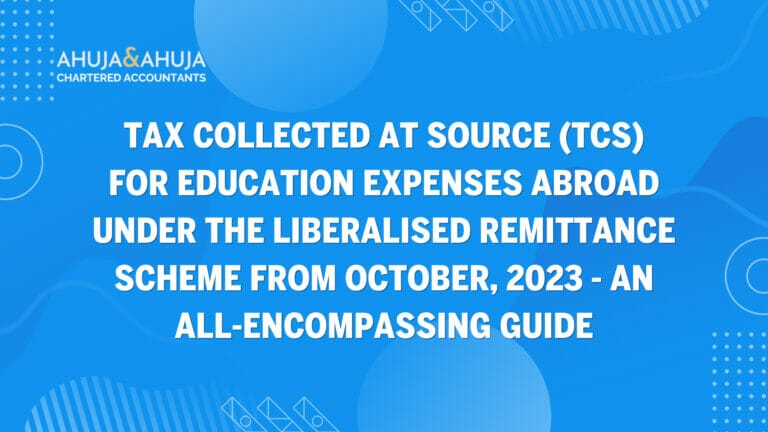Demystifying TAN: Your Essential Guide to Tax Deduction and Collection Account Number
In the realm of tax-related procedures in India, one term you’ll come across frequently is the Tax Deduction and Collection Account Number, commonly referred to as TAN. But what exactly is TAN, and why is it so important?
TAN is a 10-digit alphanumeric number issued by the Income Tax Department. Brought into existence under Section 203A of the Income Tax Act, 1961, it is an essential identifier for all those responsible for collecting or deducting tax.
Consider it your unique tax identifier, central to the numerous financial dealings you’ll undertake as an individual or an entity. It helps the IT department efficiently process TDS or TCS payments and returns linked with your account. Additionally, TAN plays a critical role in reducing errors and mismatches in the tax deduction system, further streamlining the process and saving crucial resources.
But who needs a TAN? Essentially, it must be obtained by any entity or individual responsible for Tax Deduction at Source (TDS) or Tax Collection at Source (TCS). According to the Income Tax Act, it becomes mandatory to quote TAN in all TDS or TCS transactions, TDS/TCS return, TDS/TCS payment challan, and TDS/TCS certificates “TDS/TCS return filings”
Over the coming sections, we will delve further into the mandatory nature of TAN, its intricate structure, the steps needed to apply for a TAN, and the consequences if one fails to obtain or incorrectly quotes TAN. This extensive guide is designed to equip you with all you need to know about TAN, putting you in the driver’s seat when it comes to managing your tax-related obligations professionally and seamlessly.
Who Should Apply for TAN?
Now that we understand the significance of TAN, let’s dive deeper into who exactly needs to apply for it. Under the provisions of the Income Tax Act, certain entities are legally mandated to obtain a TAN. Let’s explore more about these requirements.
- Person Responsible for Tax Deduction at Source (TDS):
If you are responsible for deducting tax at source as per the provisions of the Income Tax Act, you need to apply for TAN. This includes individuals, companies, government bodies, or any other entity that falls under the scope of TDS. Whether you’re an employer deducting tax from employee salaries or any other person making payments with TDS obligations, TAN is a must-have.
- Person Responsible for Tax Collection at Source (TCS):
Similarly, any person responsible for collecting tax at source is also required to obtain a TAN. This typically applies to sellers or service providers who collect TCS from buyers at the time of sale or rendering of services.
It’s crucial to note that the scope of TAN extends beyond just businesses and commercial establishments. Even non-profit organizations, charitable institutions, and government bodies engaging in TDS or TCS activities must comply with the TAN requirement.
Failure to obtain a TAN when it is mandatory can lead to various consequences, including penalties and restrictions in carrying out financial operations smoothly. Let’s explore the implications of not having a TAN in the next section.
The Relevance of TAN Number
Having understood who needs to apply for TAN, let’s now explore the significance of this unique identification number in tax-related procedures. While applying for TAN is mandatory for eligible entities, failing to do so can have various consequences.
One of the primary implications of not having a TAN is the inability to file tax returns and meet various tax-related obligations. Since TAN is required to be quoted in all TDS or TCS transactions and associated documents, not having a TAN can cause obstacles when it comes to fulfilling your tax responsibilities smoothly.
Furthermore, failure to quote TAN where required can result in penalties and legal repercussions. As per Section 272BB of the Income Tax Act, if TAN is not quoted or incorrectly quoted, a penalty of Rs. 10,000 can be imposed. This penalty can be levied in cases like non-quoting of TAN in TDS/TCS statements/returns, non-quoting in TDS/TCS certificates, non-quoting in TDS/TCS payment challans, and non-quoting while submitting various income tax-related forms.
To avoid such penalties and ensure compliance, it is vital to obtain a TAN and ensure its correct usage in the appropriate documents. Whether you’re an individual or a business entity, having a TAN is an essential aspect of your tax-related obligations.
Structure of TAN
Now that we understand the relevance and consequences of TAN, let’s delve into its unique structure. The TAN, being a 10-digit alphanumeric number, holds specific parts that represent different elements. Let’s explore the components of a TAN and their significance.
- First four letters: The first three letters of a TAN represent the jurisdiction where the TAN is issued by the Income Tax Department. Each jurisdiction has a specific code assigned, which helps identify the location.
- Fifth letter: The fourth letter of the TAN is the initial of the entity or individual applying for the TAN. It indicates the category or type of entity associated with the TAN.
- Next five digits: These numerical digits in the middle of the TAN are unique numbers generated by the system. They play a crucial role in distinguishing one TAN from another within a specific jurisdiction and entity category.
- Last letter: The tenth and final digit of the TAN is a unique letter generated by the system. It serves as a verification code to ensure the validity and authenticity of the TAN.
By breaking down the structure of a TAN, it becomes easier to understand the origin and identification of each TAN number. This unique structure enables efficient tracking, processing, and identification of TDS or TCS transactions associated with a specific entity.
TAN Application Process
Now that we have covered the significance and structure of TAN, let’s explore the process of applying for a TAN. Whether you prefer an offline or online mode, the application process is straightforward. Let’s take a closer look at both options.
Offline Application Process:
- Obtain Form 49B: Start by obtaining Form 49B, which is the application form for allotment of TAN. You can download the form from the National Securities Depository Limited (NSDL) website or collect a physical copy from any TIN-Facilitation Center (TIN-FC) “TAN application process”.
- Fill out the Form: Fill the form with accurate and complete details. Ensure that you provide all the necessary information required for TAN allotment.
- Submit the Form: Submit the filled-out form along with the requisite fees to the nearest TIN-FC. No supporting documents need to be furnished for an in-person TAN application.
- Verification and Allotment: The Income Tax Department will then verify the details provided in the application form. Once the verification is complete, the TAN will be allotted and communicated to the applicant.
Online Application Process:
- Visit NSDL Website: Go to the NSDL website and navigate to the TAN application section.
- Fill out the Online Form: Read the instructions carefully and fill out the online application form, providing all the required details accurately.
- Submission of Form: After submitting the form online, you will receive an acknowledgement number. Print the acknowledgement and send it to the NSDL office in Pune.
- Payment of Fees: Pay the required fees through an online transaction or via demand draft/cheque.
- Verification and Allotment: Upon receiving your application, the Income Tax Department will verify the details provided. Once the verification is complete, the TAN details will be sent to the applicant’s provided address or via email.
By following these simple steps, you can successfully apply for a TAN, ensuring compliance with tax-related procedures and obligations.
Consequences of Non-Compliance
Understanding the consequences of non-compliance with TAN requirements is crucial to ensure adherence and avoid penalties. Let’s explore the potential penalties for not obtaining or incorrectly quoting TAN as per Section 272BB of the Income Tax Act.
- Penalty for Failure to Obtain TAN: If an entity or individual required to obtain a TAN fails to do so, they may be subject to a penalty. As per Section 272BB(1), the penalty imposable for the failure to obtain a TAN is Rs. 10,000.
- Penalty for Quoting Incorrect TAN: Quoting an incorrect TAN is also a violation and can attract penalties. Under Section 272BB(1A), a penalty of Rs. 10,000 can be imposed for quoting an incorrect TAN in TDS or TCS statements, certificates, payment challans, or other related forms.
It is important to ensure that the correct TAN is provided at all times to avoid the aforementioned penalties and comply with tax-related rules and regulations.
By being diligent and proactive in obtaining and correctly quoting the TAN in all necessary documents and transactions, individuals and entities can avoid penalties and ensure smooth compliance with the Income Tax Act.
Conclusion
Obtaining and correctly quoting the Tax Deduction and Collection Account Number (TAN) is crucial for individuals and entities responsible for tax deduction or collection. Compliance with TAN requirements ensures smooth tax-related procedures, avoids penalties, and allows for seamless filing of tax returns.
By following the application process and adhering to the necessary guidelines, individuals and entities can ensure compliance with the Income Tax Act and fulfill their tax-related obligations efficiently.
Remember, TAN acts as a key identifier and plays a vital role in the seamless tax ecosystem, contributing to efficient tax collection and deduction procedures.
Note: The information provided in this article is for informational purposes only. It is recommended to consult with a tax professional or visit the official Income Tax Department website for the latest guidelines and procedures related to TAN.
We hope this comprehensive guide has equipped you with the knowledge you need to understand TAN and its significance in tax-related procedures.
- TDS/TCS Return Filings: Link
- Lower Deduction Certificate (LDC) for TDS Sale of Property (NRI): Link
- TCS on Education Expenses Abroad from October 2023: Link
Thank you for reading! If you have any further questions or require assistance, feel free to reach out.
Disclaimer
The materials provided herein are solely for educational and informational purposes. No attorney/professional-client relationship is created when you access or use the site or the materials. The information presented on this site does not constitute legal or professional advice and should not be relied upon for such purposes or used as a substitute for professional or legal advice.






